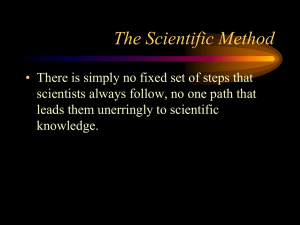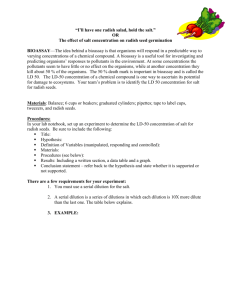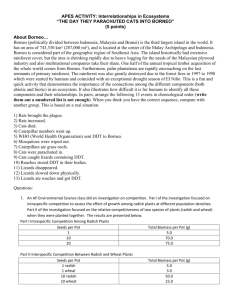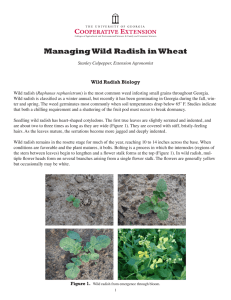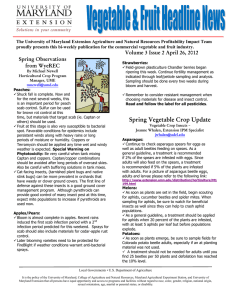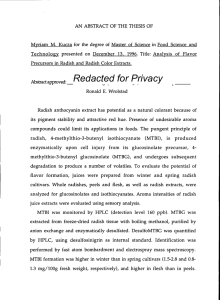UC Riverside, CA 07-14-06
advertisement
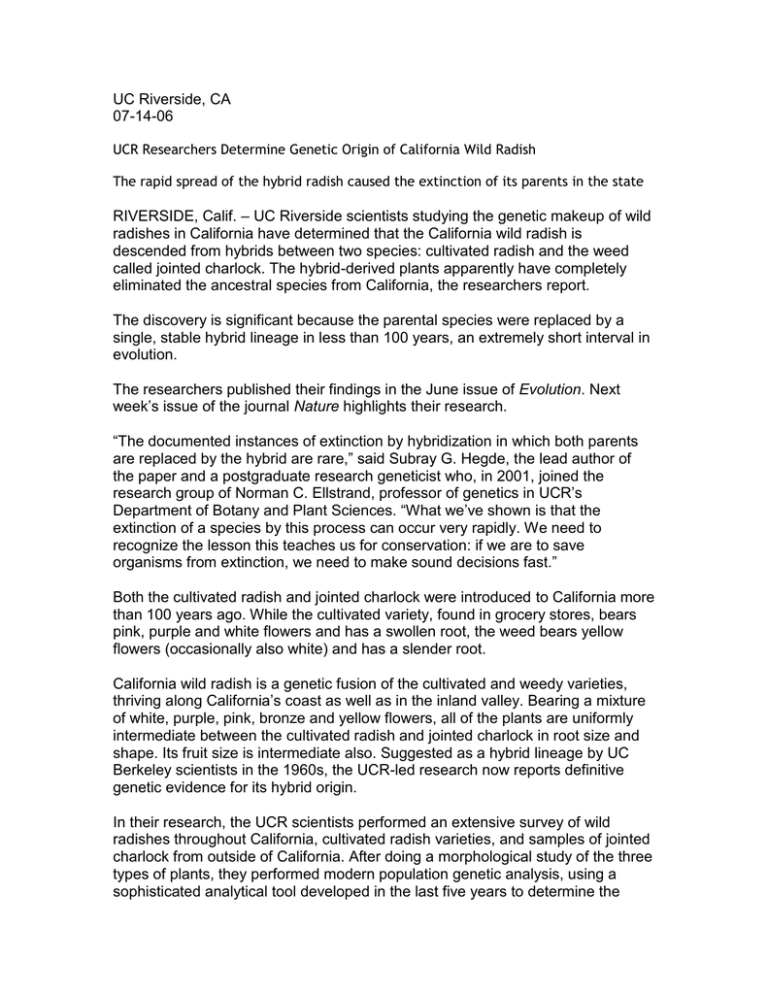
UC Riverside, CA 07-14-06 UCR Researchers Determine Genetic Origin of California Wild Radish The rapid spread of the hybrid radish caused the extinction of its parents in the state RIVERSIDE, Calif. – UC Riverside scientists studying the genetic makeup of wild radishes in California have determined that the California wild radish is descended from hybrids between two species: cultivated radish and the weed called jointed charlock. The hybrid-derived plants apparently have completely eliminated the ancestral species from California, the researchers report. The discovery is significant because the parental species were replaced by a single, stable hybrid lineage in less than 100 years, an extremely short interval in evolution. The researchers published their findings in the June issue of Evolution. Next week’s issue of the journal Nature highlights their research. “The documented instances of extinction by hybridization in which both parents are replaced by the hybrid are rare,” said Subray G. Hegde, the lead author of the paper and a postgraduate research geneticist who, in 2001, joined the research group of Norman C. Ellstrand, professor of genetics in UCR’s Department of Botany and Plant Sciences. “What we’ve shown is that the extinction of a species by this process can occur very rapidly. We need to recognize the lesson this teaches us for conservation: if we are to save organisms from extinction, we need to make sound decisions fast.” Both the cultivated radish and jointed charlock were introduced to California more than 100 years ago. While the cultivated variety, found in grocery stores, bears pink, purple and white flowers and has a swollen root, the weed bears yellow flowers (occasionally also white) and has a slender root. California wild radish is a genetic fusion of the cultivated and weedy varieties, thriving along California’s coast as well as in the inland valley. Bearing a mixture of white, purple, pink, bronze and yellow flowers, all of the plants are uniformly intermediate between the cultivated radish and jointed charlock in root size and shape. Its fruit size is intermediate also. Suggested as a hybrid lineage by UC Berkeley scientists in the 1960s, the UCR-led research now reports definitive genetic evidence for its hybrid origin. In their research, the UCR scientists performed an extensive survey of wild radishes throughout California, cultivated radish varieties, and samples of jointed charlock from outside of California. After doing a morphological study of the three types of plants, they performed modern population genetic analysis, using a sophisticated analytical tool developed in the last five years to determine the radishes’ genetic makeup. “We found that wild radish in California has now become an evolutionary entity separate from both of its parents,” said Ellstrand, a co-author of the paper. “It can serve as an excellent model organism for evolutionary studies.” Hegde noted that the California wild radish has spread fast in the state, where, unlike its parents, it has become invasive. Next in their research the scientists will look for a genetic explanation for how the hybrid acquired its invasive behavior. Said Hegde, “This approach could help us find a way to control the spread of other plants that evolved invasiveness after interspecies hybridization.” Along with Hegde and Ellstrand, researchers on the study were UCR’s Janet M. Clegg and Iowa State University’s John D. Nason. Nason received his Ph.D. in botany from UCR in 1991. The study was funded by the Agricultural Experiment Station at UCR.


